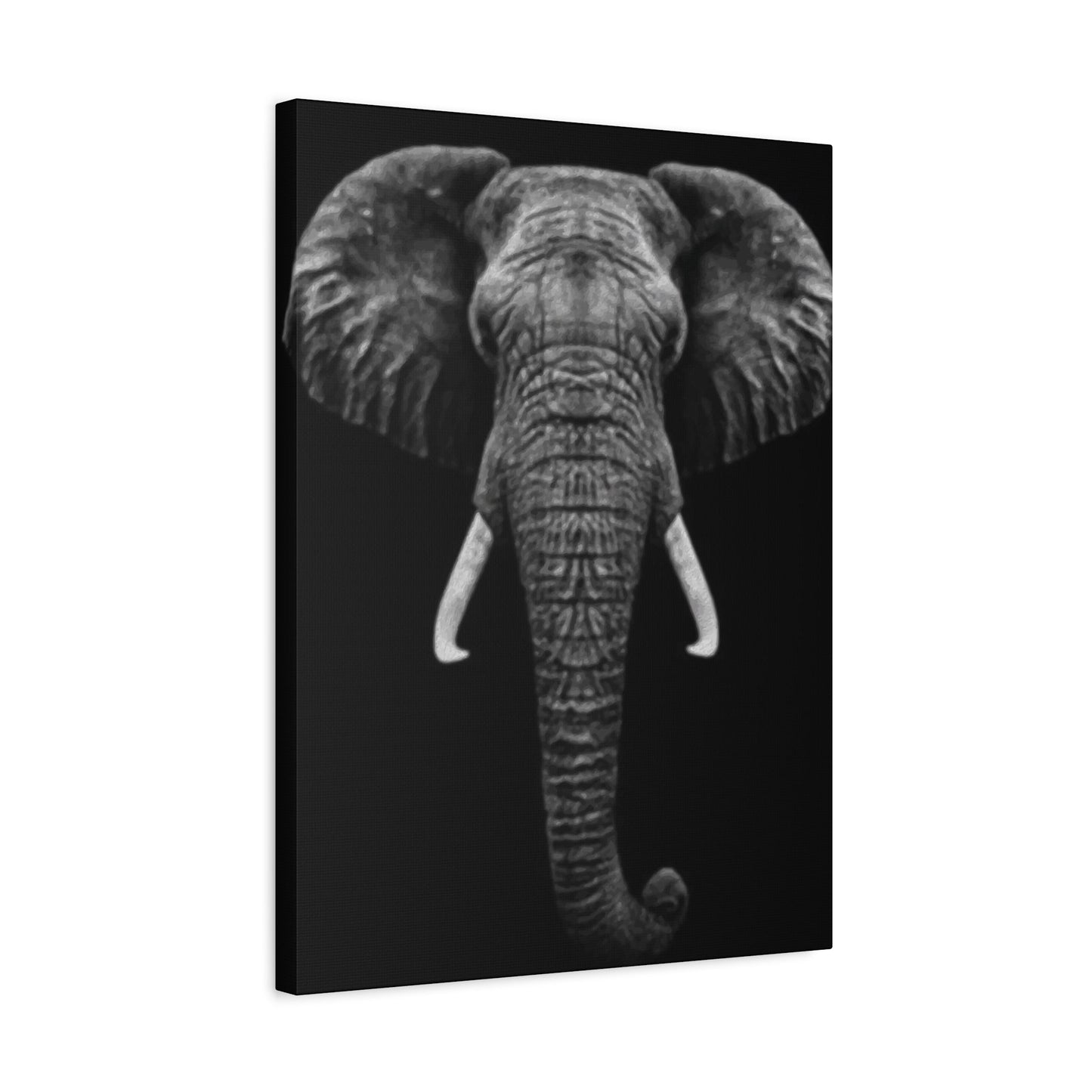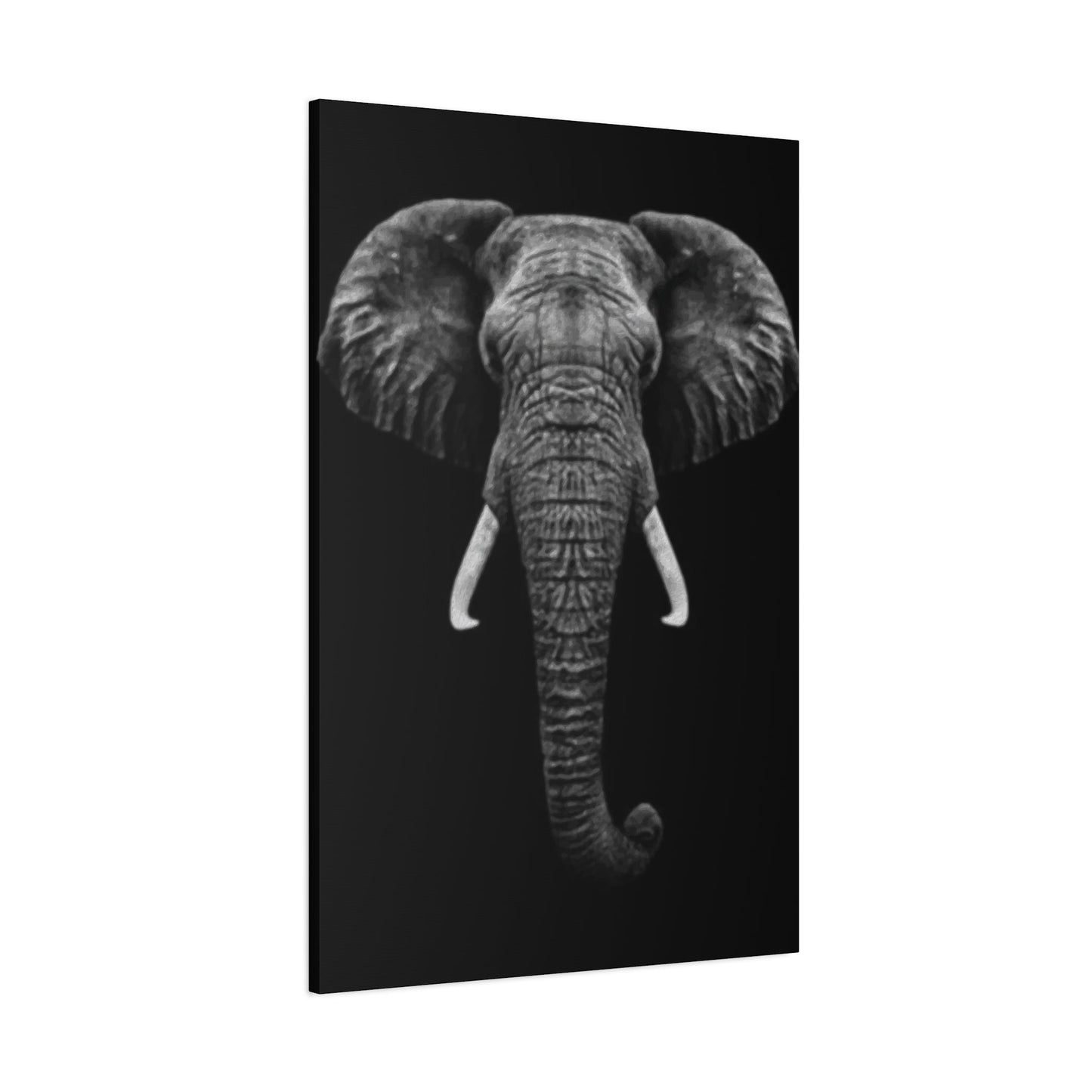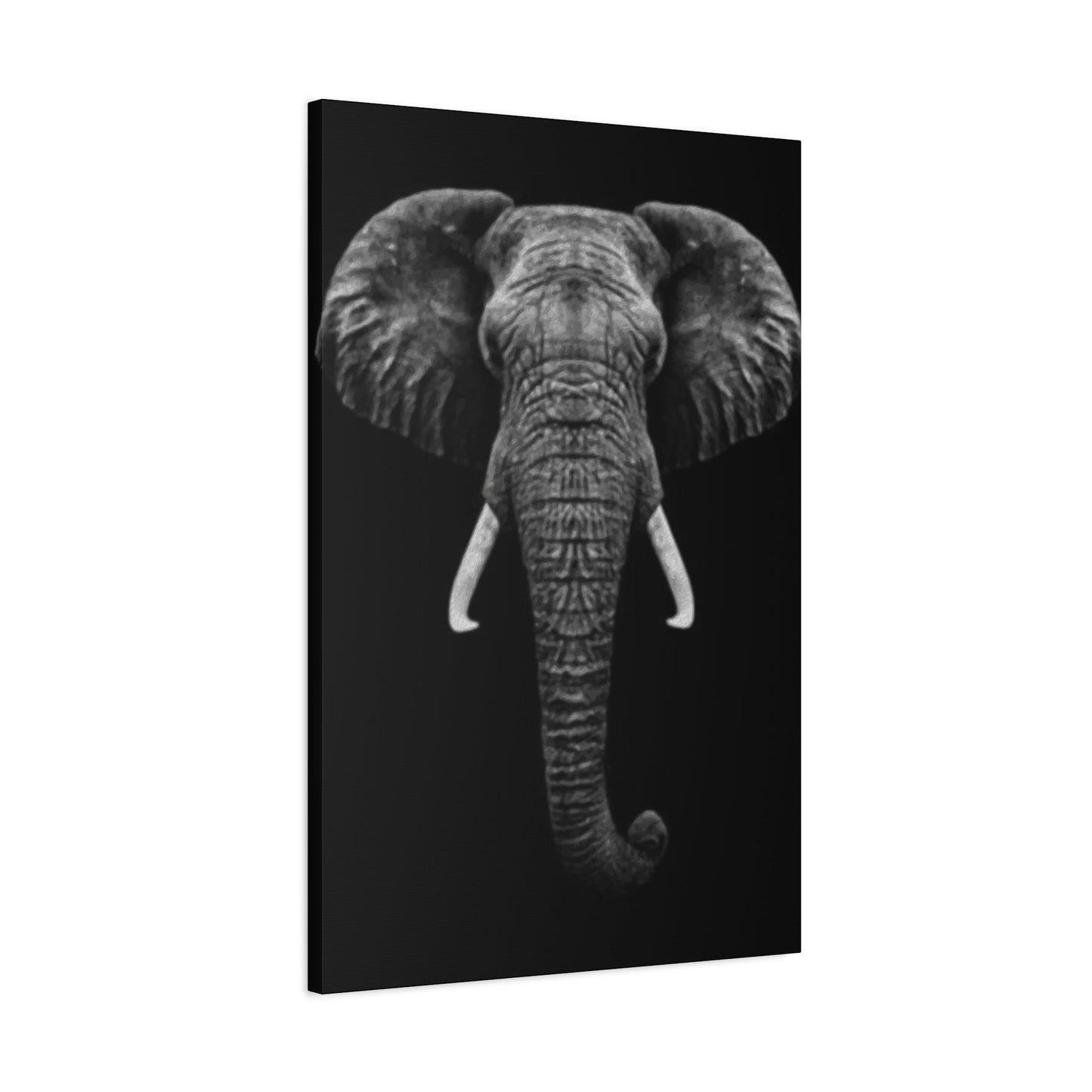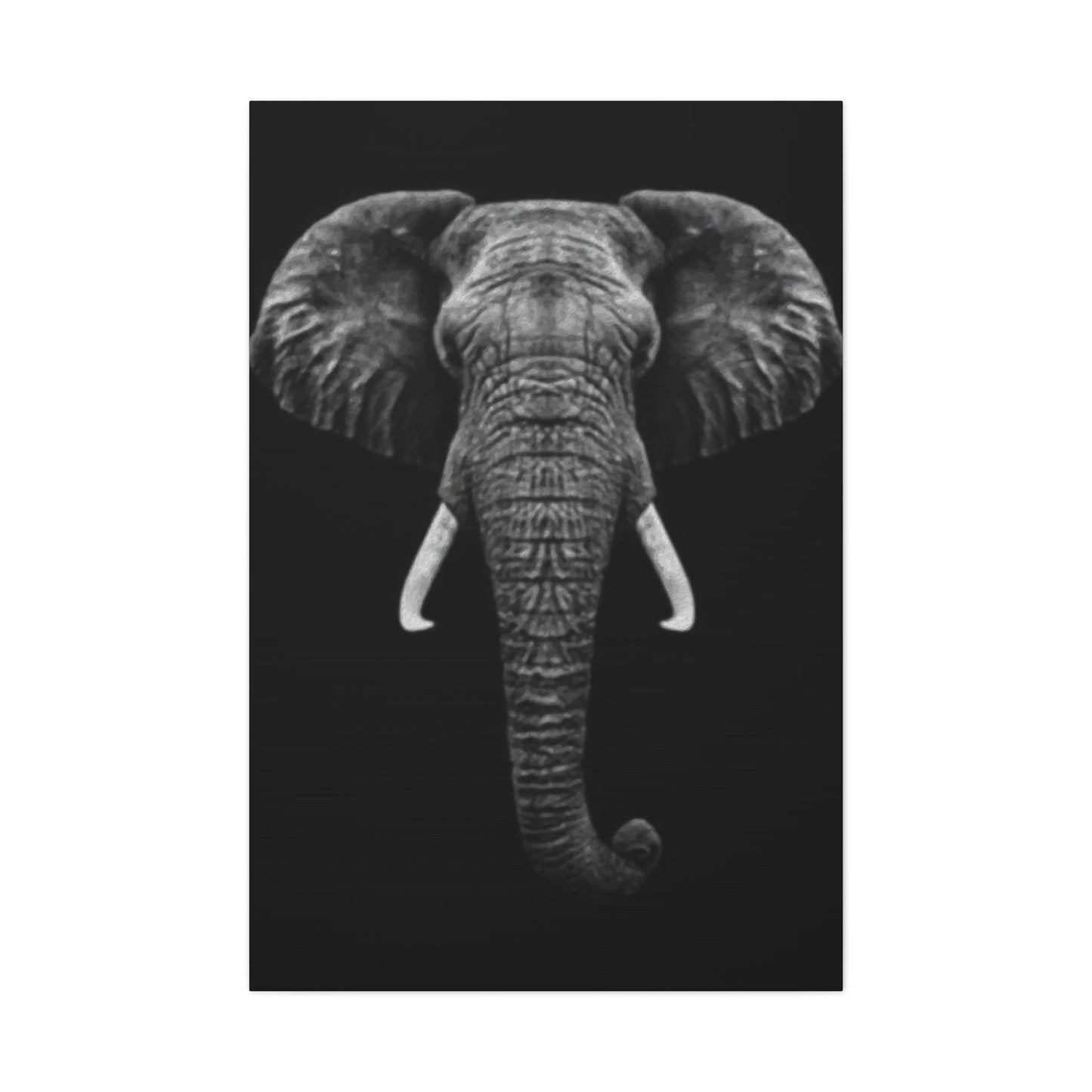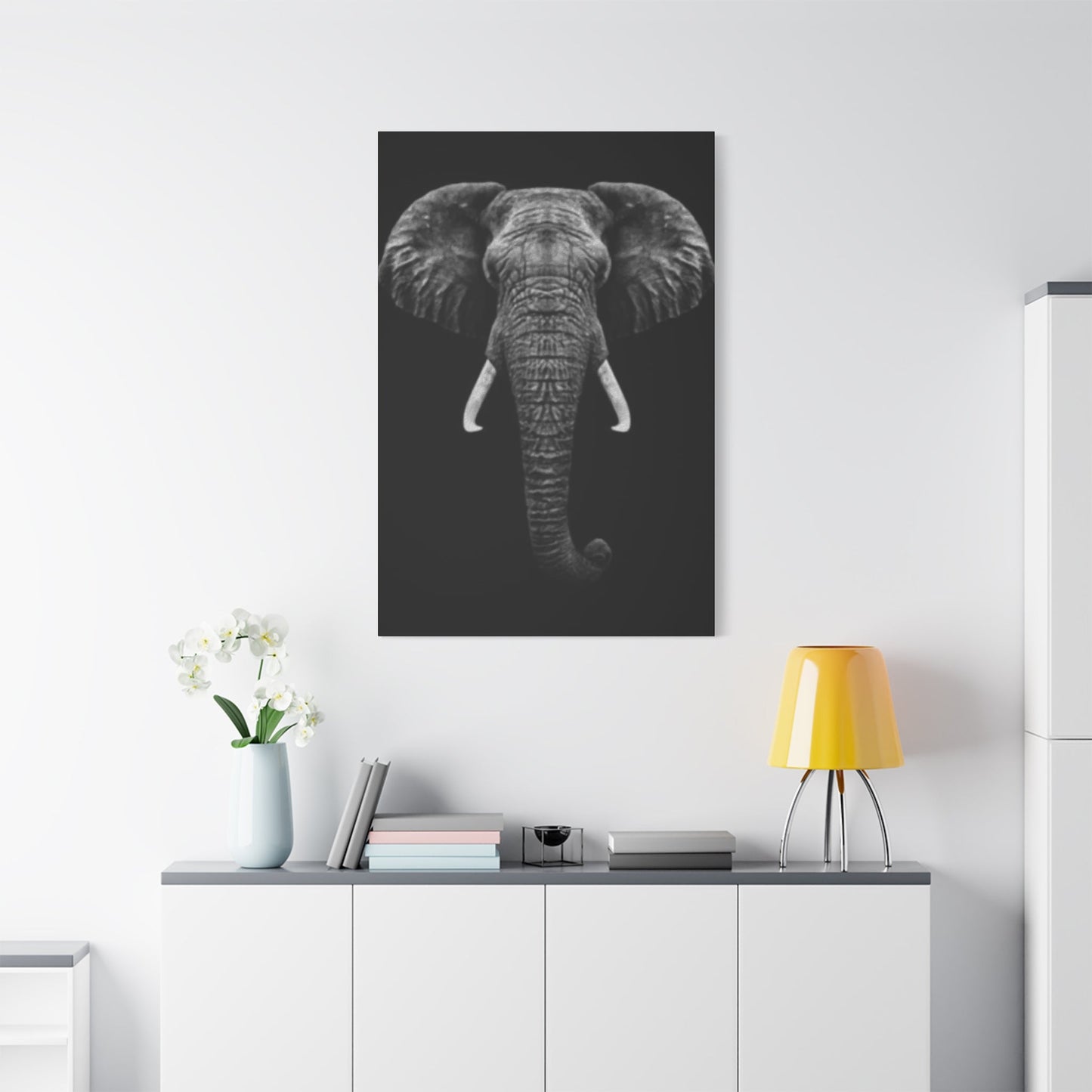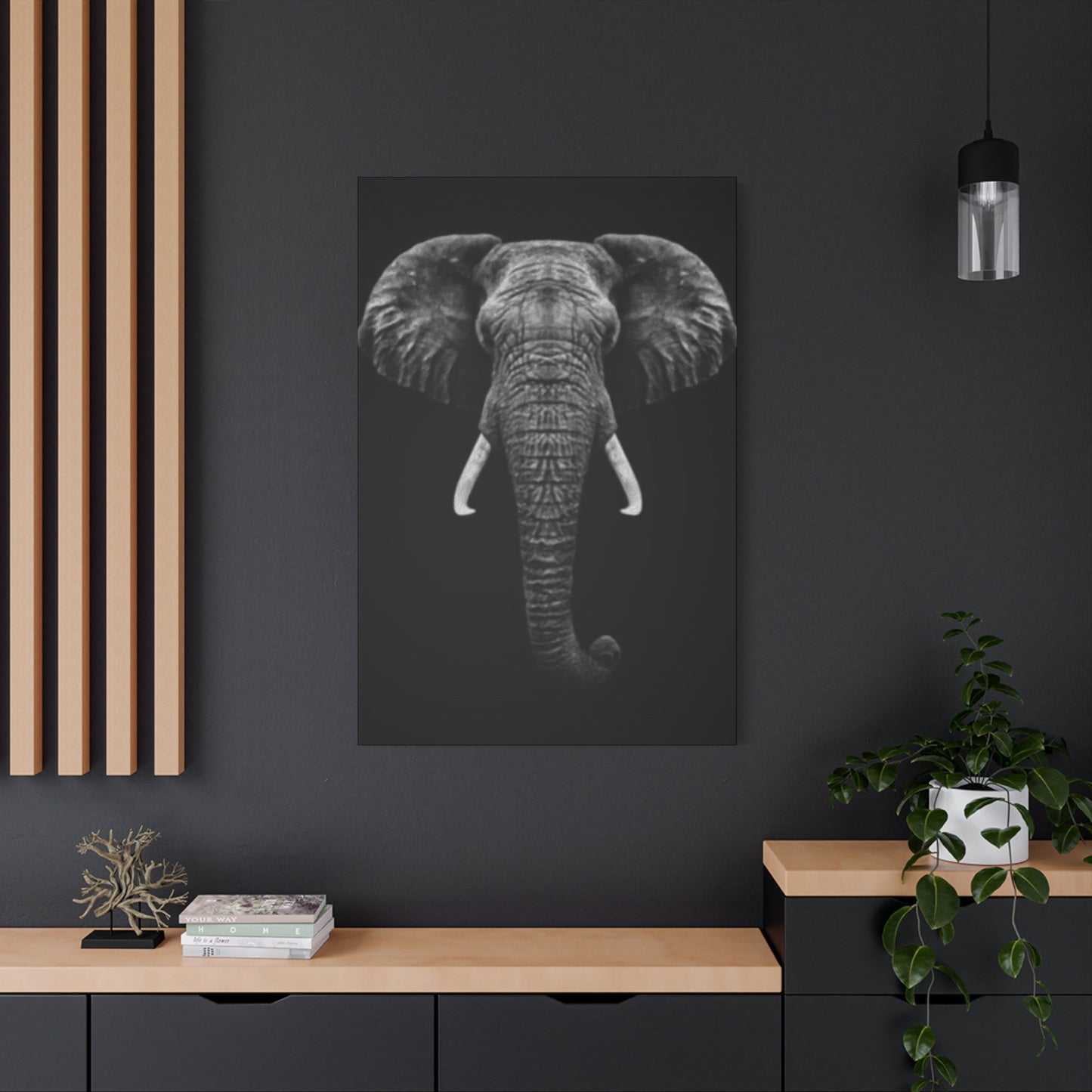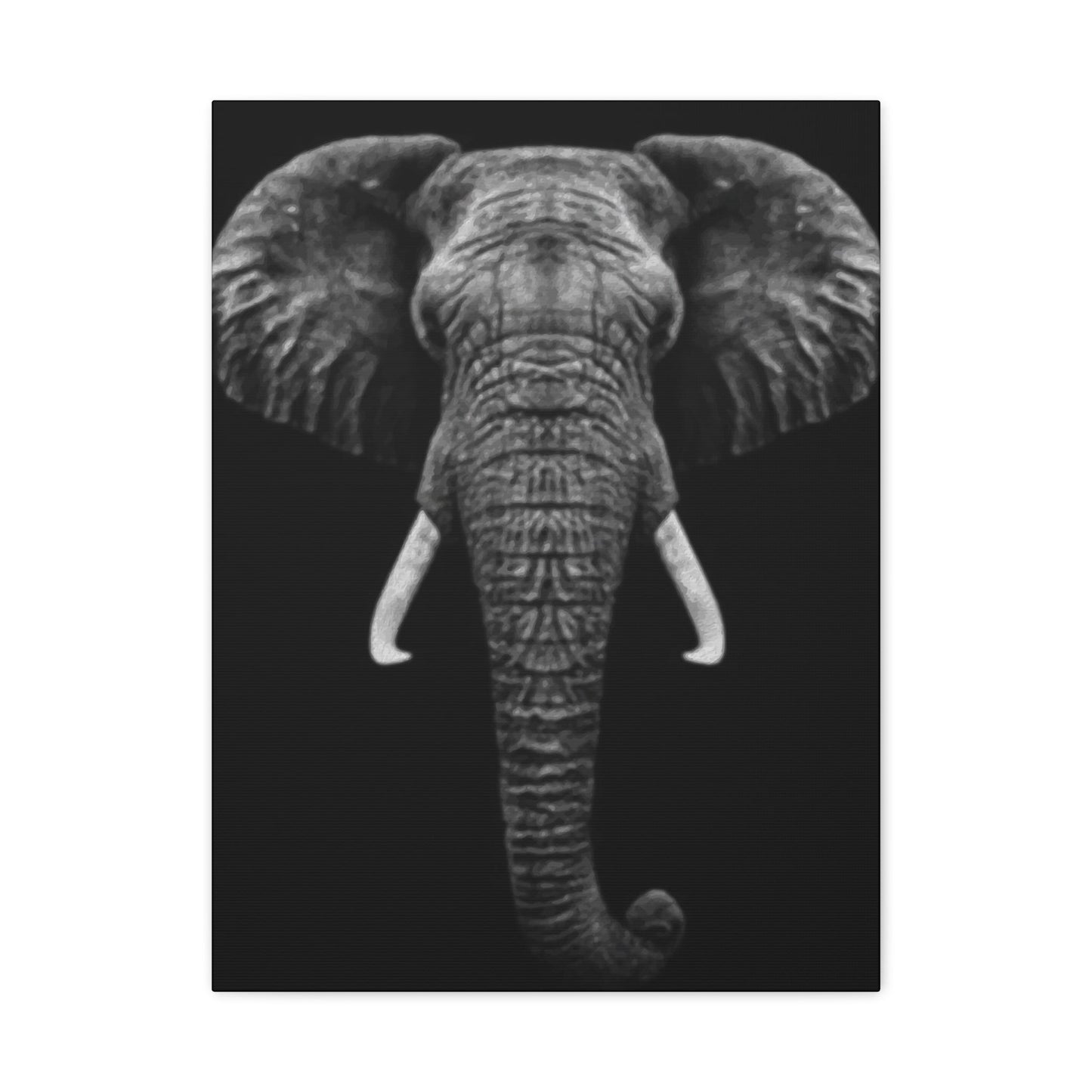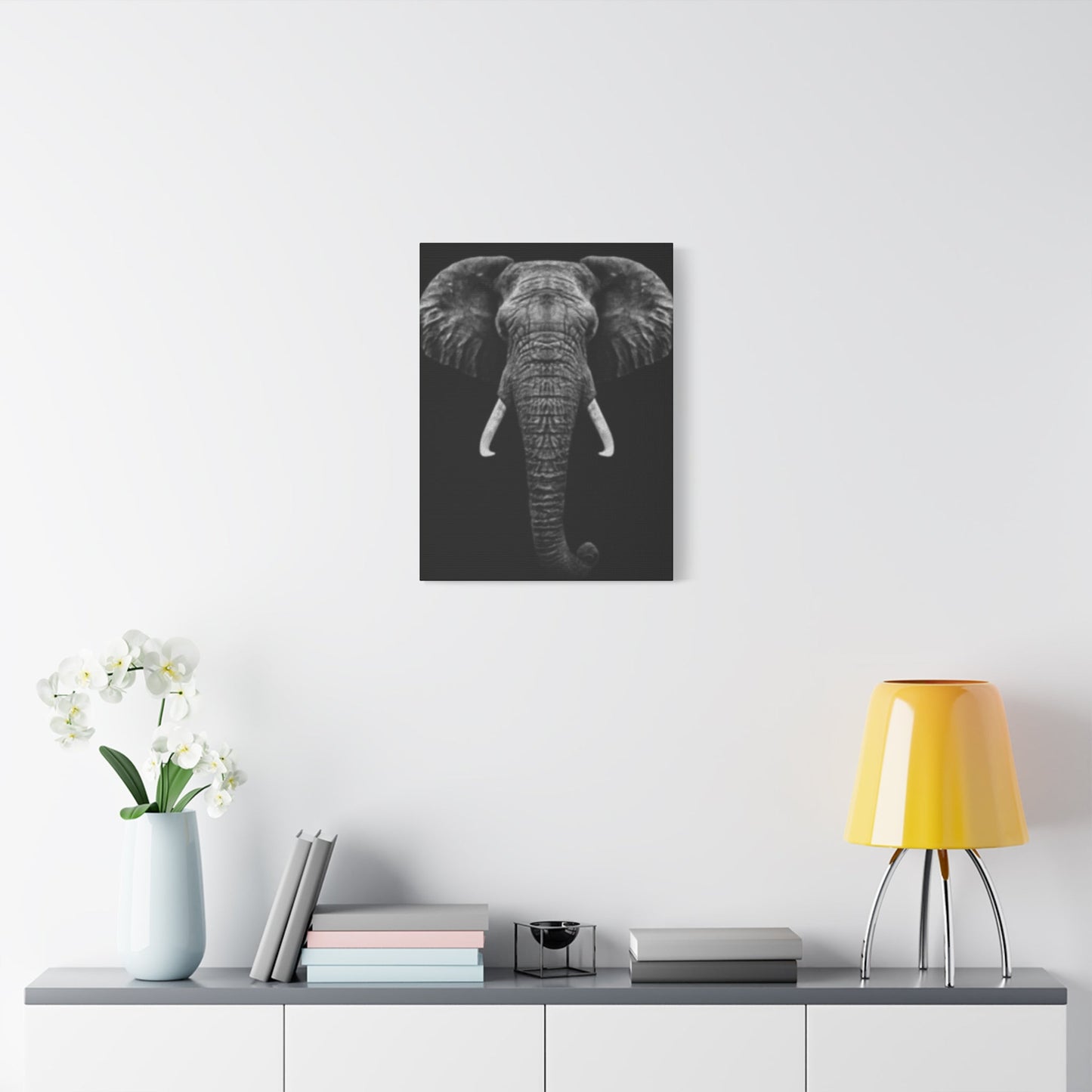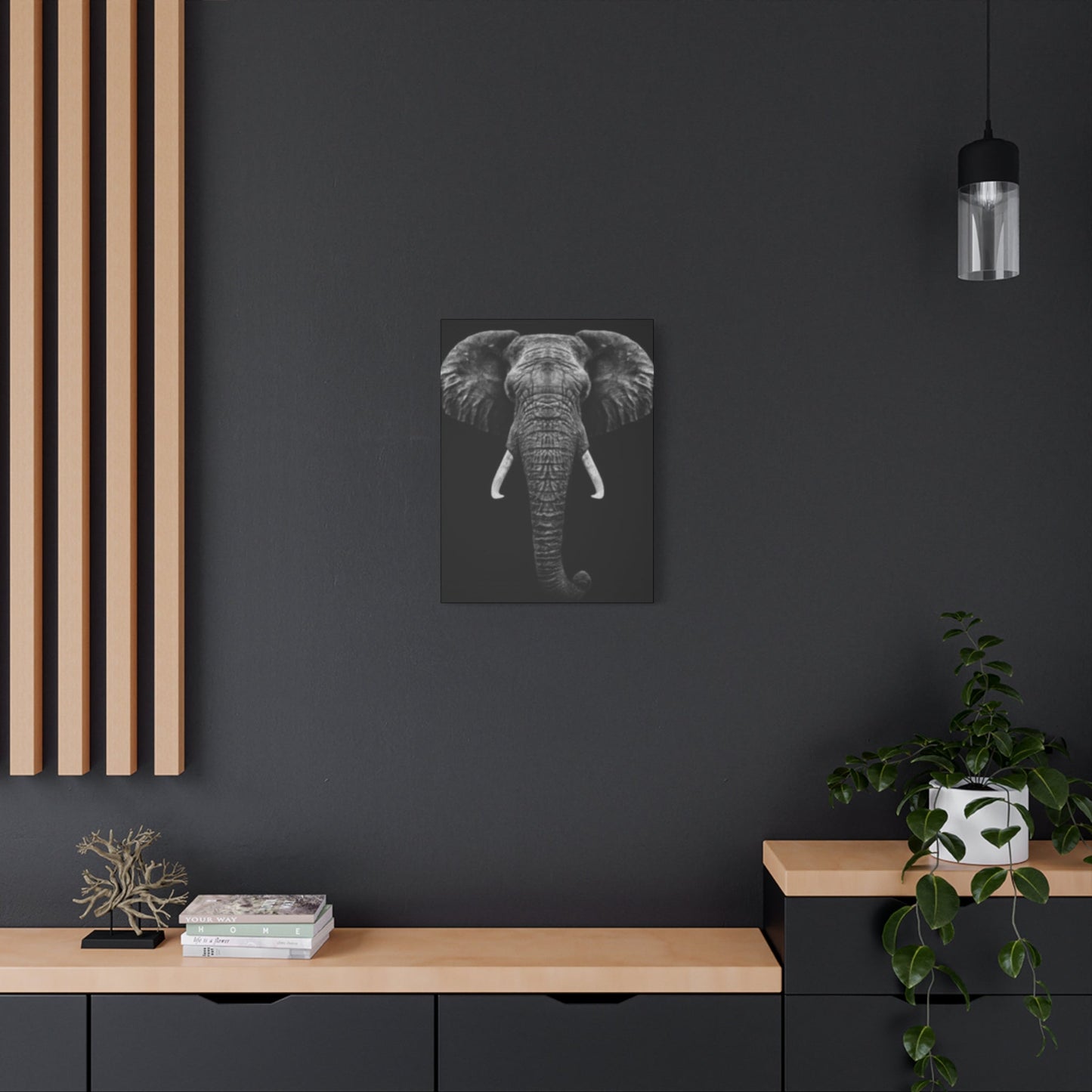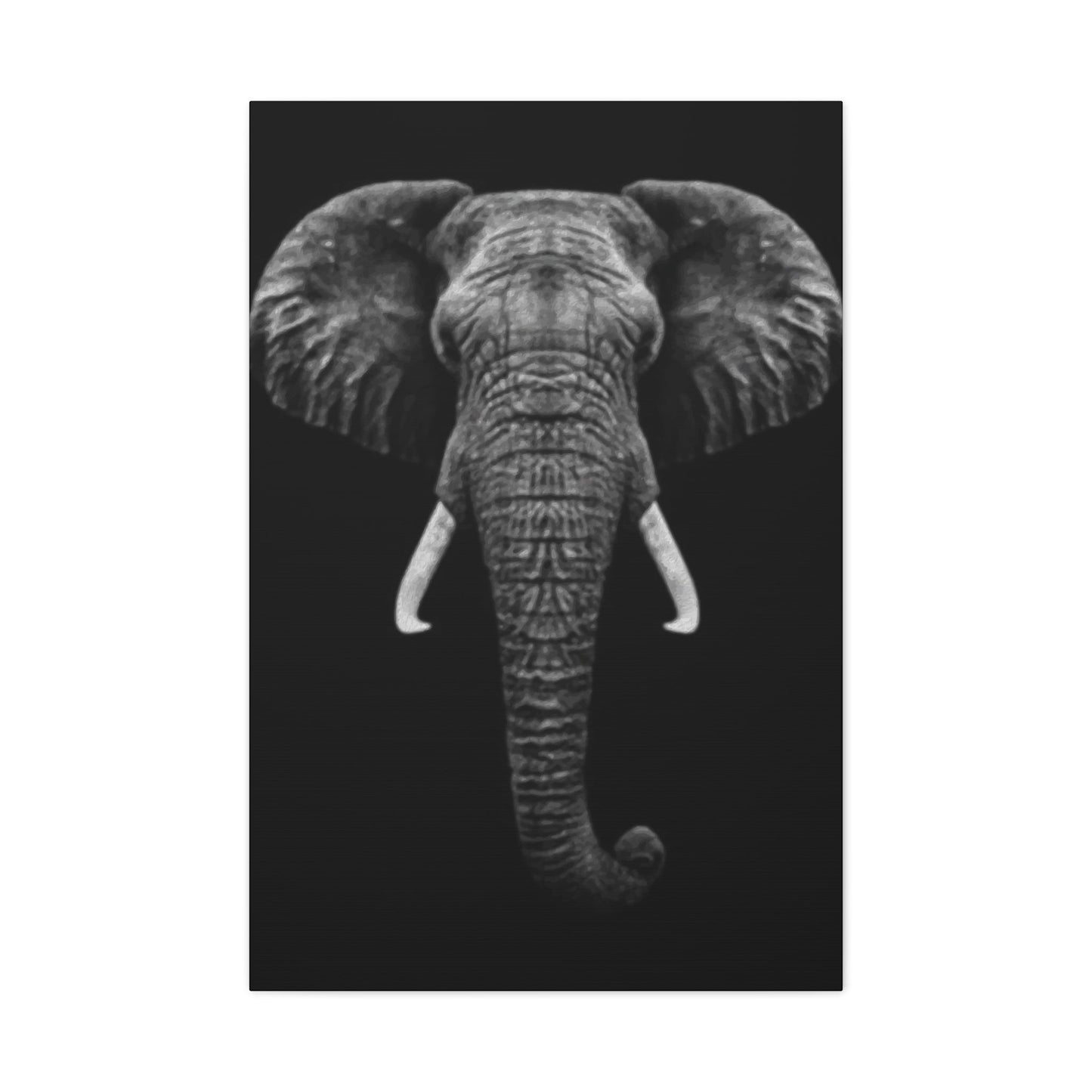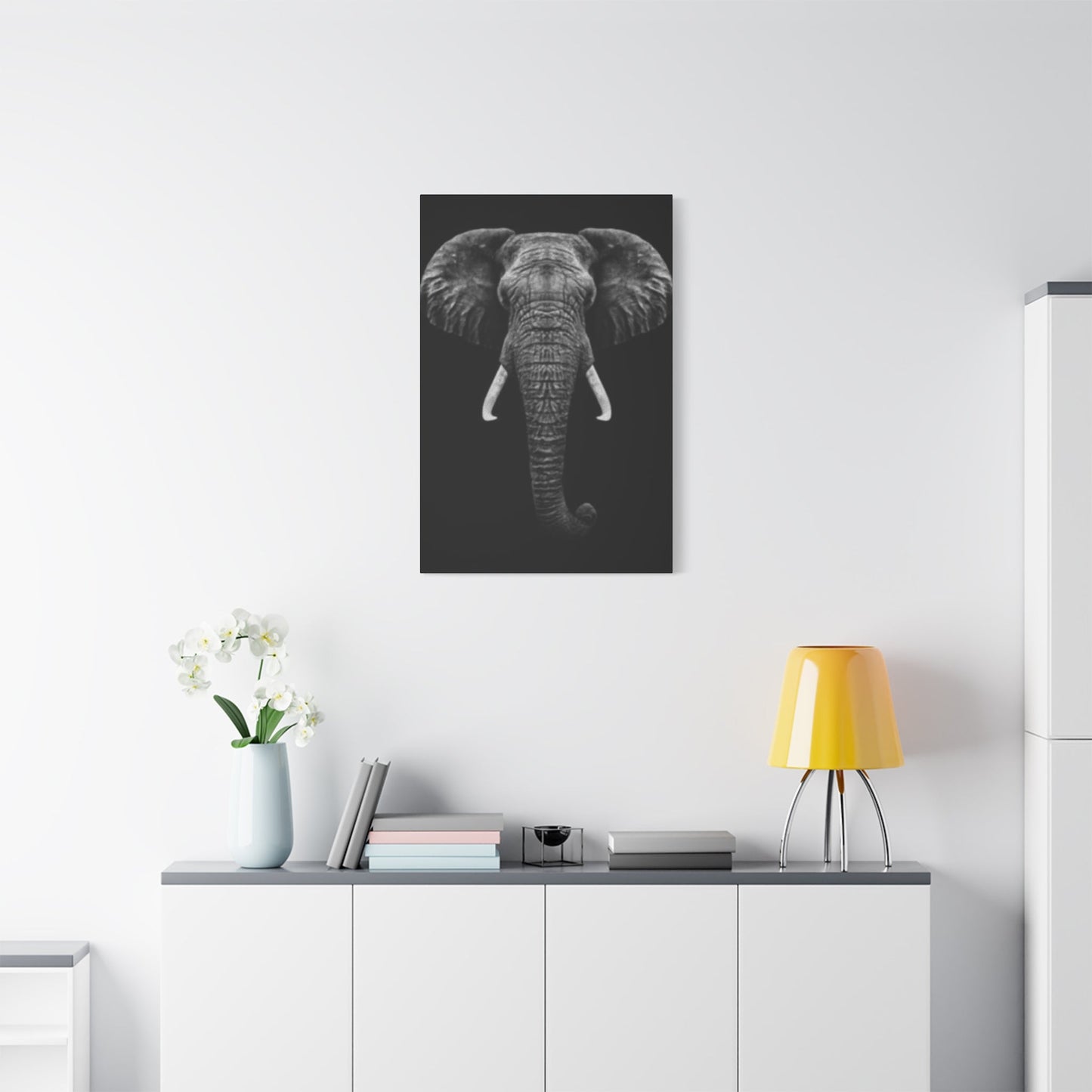Captivating Elephant Head Shot Wall Art: The Perfect Blend of Nature's Power
The magnificent presence of elephants has captivated humanity for centuries, inspiring countless artists to capture their essence through various mediums. When we bring these gentle giants into our homes through carefully selected artwork, we invite a sense of tranquility, wisdom, and natural beauty that transforms any room into a sanctuary of peaceful energy. The world of elephant-themed artwork offers an incredible diversity of styles, from photorealistic portraits that showcase every wrinkle and detail to abstract interpretations that capture the spirit and emotion of these remarkable creatures.
Elephant wall art serves as more than mere decoration; it becomes a powerful statement piece that reflects our deep connection to nature and our appreciation for one of the animal kingdom's most intelligent and emotionally complex species. Whether displayed in a living room, bedroom, office, or hallway, these magnificent creatures bring an immediate sense of calm and strength to any environment. The gentle eyes, textured skin, and graceful movements of elephants translate beautifully into visual art, creating focal points that draw viewers into contemplation and wonder.
The versatility of elephant artwork makes it suitable for virtually any decorating style, from modern minimalist approaches to traditional safari themes. Contemporary artists have embraced elephants as subjects, creating everything from bold black and white photography to colorful abstract paintings that capture the essence of these majestic animals. The emotional depth that elephants convey through their expressions and body language provides artists with endless inspiration, resulting in pieces that resonate deeply with viewers and create lasting impressions.
The Power and Grace of Elephants
Elephants embody a unique combination of raw power and gentle grace that few other creatures can match. These magnificent animals, weighing several tons yet moving with surprising elegance, represent the perfect balance between strength and gentleness that many people strive to achieve in their own lives. When we observe elephants in their natural habitat or through artistic representations, we witness creatures that command respect through their sheer presence while simultaneously displaying remarkable tenderness in their interactions with family members and their environment.
The physical attributes of elephants contribute significantly to their powerful yet graceful appearance. Their massive bodies, supported by sturdy legs that move with rhythmic precision, create a sense of groundedness and stability. The trunk, perhaps the most distinctive feature of an elephant, serves as both a powerful tool and a delicate instrument capable of the most gentle touches. This duality is perfectly captured in quality elephant wall art, where artists emphasize both the strength evident in the animal's muscular structure and the softness visible in their caring interactions.
The graceful movements of elephants have inspired artists throughout history to capture these moments of beauty in various artistic mediums. Whether depicted in mid-stride across African savannas or standing peacefully beside watering holes, elephants in art convey a sense of purposeful movement combined with serene composure. This combination makes elephant artwork particularly effective in creating atmospheric pieces that bring both energy and tranquility to living areas.
The social dynamics of elephant herds provide artists with countless opportunities to showcase the gentle nature of these powerful creatures. Images of elephants touching trunks, protecting their young, or simply standing together in peaceful companionship demonstrate the emotional intelligence and deep family bonds that characterize elephant communities. These scenes translate beautifully into wall art, creating pieces that not only celebrate the animals themselves but also remind viewers of the importance of family, community, and mutual support.
The way elephants interact with their environment also demonstrates their grace despite their considerable size. Watching elephants carefully navigate around obstacles, gently pull leaves from trees, or delicately pick up objects with their trunks reveals a level of spatial awareness and control that seems almost impossible given their massive proportions. Artists who capture these moments create works that celebrate the harmony between power and precision, strength and sensitivity.
The aging process in elephants adds another layer of grace to their appearance, with older individuals displaying wisdom and dignity in their bearing. The weathered skin, knowing eyes, and deliberate movements of elderly elephants create particularly compelling subjects for artwork. These pieces often become conversation starters, inviting viewers to reflect on themes of wisdom, experience, and the beauty that comes with age and maturity.
Capturing Elephant Emotion in Art
The emotional expressiveness of elephants provides artists with rich subject matter that translates powerfully into visual art. These intelligent creatures display a remarkable range of emotions that can be clearly observed in their facial expressions, body language, and interactions with others. Artists who specialize in elephant portraiture understand that capturing these emotional nuances requires careful attention to subtle details that might be overlooked in more general wildlife art.
The eyes of elephants serve as windows to their complex emotional lives, revealing intelligence, compassion, playfulness, and sometimes melancholy. Skilled artists focus intently on recreating the depth and expressiveness found in elephant eyes, understanding that these features often become the focal point of successful elephant wall art. The way light reflects in an elephant's eye, the positioning of the eyelids, and the surrounding skin texture all contribute to conveying specific emotional states that viewers can immediately recognize and connect with.
Elephant ears play a crucial role in emotional expression, with their position and movement indicating various moods and intentions. Relaxed elephants often have ears in natural positions, while alert or excited animals may have their ears extended or flapping. Aggressive or defensive elephants might pin their ears back, creating dramatically different visual impressions. Artists who understand these subtle communication signals can create more authentic and emotionally resonant pieces that accurately reflect the animal's state of mind.
The trunk serves as perhaps the most expressive feature of an elephant, capable of conveying everything from gentle curiosity to protective aggression. Artists pay special attention to trunk positioning, whether it's extended in greeting, curled protectively around a baby elephant, or raised in warning. The incredible flexibility and expressiveness of the trunk provide endless opportunities for creating dynamic and emotionally engaging artwork that captures specific moments of interaction or contemplation.
Body posture in elephants communicates volumes about their emotional state, and experienced wildlife artists understand how to use these physical cues to create more compelling compositions. A relaxed elephant standing with even weight distribution creates a very different emotional impression than one with raised head and tense muscles. The positioning of legs, the curve of the back, and the overall stance all contribute to the emotional narrative of the artwork.
Group dynamics among elephants offer artists opportunities to capture complex emotional interactions that resonate strongly with human viewers. Scenes of elephants comforting distressed family members, playing together, or jointly protecting their young create emotionally powerful artwork that speaks to universal themes of love, support, and community. These multi-elephant compositions often become the most treasured pieces in collections, as they tell complete emotional stories rather than simply depicting individual animals.
The challenge of capturing elephant emotion in art lies in translating three-dimensional, moving subjects into static two-dimensional representations while maintaining the emotional impact of the original moment. Successful artists accomplish this through careful composition, strategic use of light and shadow, and meticulous attention to the details that convey emotional expression. The result is artwork that not only depicts elephants accurately but also invites viewers to experience the emotional depth and complexity of these remarkable creatures.
Elephant Wall Art for a Safari Vibe
Creating an authentic safari atmosphere in your home through elephant wall art requires understanding the elements that define the African wilderness experience. Safari-themed decor goes beyond simply displaying wildlife images; it involves creating an environment that captures the essence of African landscapes, the excitement of wildlife encounters, and the profound connection between humans and nature that characterizes the safari experience.
The color palette associated with safari themes typically includes earth tones that reflect the natural African environment. Warm browns, golden yellows, burnt oranges, and deep greens create the foundation for authentic safari-inspired rooms. Elephant wall art that incorporates these colors naturally integrates with the overall decorative scheme while providing focal points that anchor the safari theme. Artists who specialize in safari-themed elephant art often use these natural color palettes to create pieces that feel authentic to the African wilderness experience.
Landscape context plays a crucial role in creating genuine safari-themed elephant art. Rather than presenting elephants against plain backgrounds, safari-inspired pieces often include elements of the African environment such as acacia trees, grasslands, water sources, or distant mountain ranges. These environmental details help transport viewers mentally to African landscapes and create more immersive visual experiences that capture the expansive feeling of being on safari.
The time of day depicted in safari elephant art significantly impacts the mood and authenticity of the piece. Golden hour lighting, with its warm, honeyed tones, creates the classic safari photography look that many associate with African wilderness adventures. Artists who capture elephants during these magical lighting conditions produce artwork that immediately evokes the romance and beauty of safari experiences. Early morning and late afternoon scenes tend to be particularly effective for creating authentic safari atmospheres.
Group compositions featuring elephant herds work especially well for safari-themed decor because they capture the social nature of elephant communities that safari visitors often observe. These multi-elephant scenes create dynamic compositions that tell stories about family relationships, migration patterns, and daily life in the African wilderness. Large-format prints of elephant herds can serve as statement pieces that dominate entire walls and create immersive safari environments.
The integration of other African wildlife elements can enhance the safari authenticity of elephant-centered artwork. Pieces that include birds, other mammals, or even suggestions of the broader ecosystem create more complete representations of African wildlife areas. However, elephants should remain the primary focus, with other elements serving to support and enhance the main subject rather than compete for attention.
Photography-based elephant wall art often provides the most authentic safari experience because it captures real moments from actual wildlife encounters. High-quality wildlife photography prints can transport viewers directly to African locations, creating immediate emotional connections to the safari experience. These pieces work particularly well in rooms where authenticity and realism are primary decorating goals.
The scale and format of safari-themed elephant wall art should reflect the expansive nature of African landscapes. Large format prints that command wall space create more immersive experiences and better capture the grandeur of African wilderness areas. Panoramic formats can be particularly effective for depicting elephant herds moving across landscapes, creating the sense of movement and migration that characterizes safari wildlife viewing.
Elevate Your Environment with Wildlife Imagery
Wildlife imagery has the unique ability to transform mundane living areas into vibrant environments that celebrate the natural world and its magnificent creatures. When carefully selected and properly displayed, wildlife art creates emotional connections between viewers and the animal kingdom while adding layers of visual interest and meaning to residential and commercial environments. Elephant imagery, in particular, brings qualities of wisdom, strength, and serenity that can profoundly impact the atmosphere of any room.
The psychological effects of wildlife imagery on human well-being have been documented through various studies that demonstrate the positive impact of natural subjects on stress reduction and emotional balance. Viewing images of elephants and other wildlife can lower blood pressure, reduce anxiety, and create feelings of calm and connectedness to nature. These benefits make wildlife wall art not just decorative choices but investments in mental and emotional health that pay dividends every day.
The selection of appropriate wildlife imagery requires consideration of both aesthetic preferences and the intended emotional impact of the artwork. Elephants offer particular advantages as subjects because they embody positive qualities that most people find appealing: intelligence, family loyalty, gentle strength, and wisdom. These associations make elephant wall art suitable for various environments, from family homes where these values are celebrated to professional settings where strength and reliability are important themes.
Color coordination between wildlife imagery and existing decor elements requires careful planning to achieve cohesive and visually pleasing results. Elephant artwork offers flexibility in this regard because these animals can be depicted in various color schemes, from natural earth tones to more artistic interpretations that incorporate contemporary color palettes. The key is selecting pieces that complement rather than clash with existing color schemes while maintaining the integrity and appeal of the wildlife subject.
Lighting plays a crucial role in maximizing the impact of wildlife wall art, with proper illumination bringing out details, colors, and emotional expressions that might otherwise be lost. Elephant artwork benefits particularly from lighting that emphasizes texture and depth, allowing viewers to appreciate the intricate details of skin patterns, the expressiveness of eyes, and the overall presence of these magnificent creatures. Strategic lighting can transform good wildlife art into extraordinary focal points that dominate room atmospheres.
The positioning and grouping of wildlife imagery within rooms requires understanding of visual flow and focal point creation. Elephant wall art works effectively both as standalone statement pieces and as part of carefully curated wildlife collections. The size and presence of elephants make them natural focal points, but they can also be integrated into gallery walls that tell broader stories about wildlife conservation, African adventures, or appreciation for the natural world.
The educational value of wildlife imagery, particularly elephant art, should not be overlooked when considering its role in elevating living environments. Quality wildlife artwork can spark conversations about conservation, animal behavior, and environmental stewardship while simultaneously serving decorative functions. This dual purpose makes wildlife wall art particularly valuable in homes with children or in educational settings where inspiration and learning opportunities are important considerations.
The long-term satisfaction derived from wildlife imagery often exceeds that of more trendy decorative choices because these pieces connect with fundamental human appreciation for nature and animals. Elephant wall art, in particular, tends to maintain its appeal over time because the qualities these animals represent remain consistently valued across cultures and generations. This timeless appeal makes wildlife imagery a sound investment for those seeking lasting decorative solutions.
Details That Bring Elephants to Life
The mastery of artistic detail separates exceptional elephant wall art from merely adequate wildlife imagery. Every wrinkle, fold, and texture on an elephant's skin tells a story of age, experience, and environmental adaptation that skilled artists learn to capture and emphasize. These details create the difference between artwork that simply depicts elephants and pieces that truly bring these magnificent creatures to life for viewers.
The texture of elephant skin provides artists with rich opportunities to demonstrate technical skill while creating visually compelling surfaces that invite closer examination. Elephant skin is not uniformly smooth but instead features varied textures ranging from deeply wrinkled areas around joints to smoother patches on younger animals. The way light plays across these textured surfaces creates patterns of highlight and shadow that can be used to create dramatic visual effects and emphasize the three-dimensional quality of the subject.
Hair patterns on elephants, though sparse, contribute important details that enhance the realism and authenticity of elephant artwork. Baby elephants typically have more hair than adults, and this hair often appears reddish or brown in color. Artists who include these subtle details demonstrate their understanding of elephant biology and their commitment to accurate representation. The positioning and appearance of individual hairs can also indicate the age and health of the depicted animal.
The intricate structure of elephant ears deserves special attention from artists because these features are both functionally important and visually distinctive. The vein patterns visible through elephant ear tissue, the way ears fold and crease when positioned differently, and the subtle color variations between the front and back surfaces all contribute to creating more lifelike representations. The size and shape of ears also vary between African and Asian elephant species, requiring artists to understand these differences for accurate portrayals.
Toenail details might seem insignificant to casual observers, but experienced wildlife artists understand that these features contribute to overall authenticity and realism. Elephant toenails vary in number between front and back feet and between African and Asian species. The condition of toenails can also indicate the animal's environment and lifestyle, with wild elephants typically having more worn and naturally shaped nails compared to those in captivity.
The eyes of elephants contain numerous subtle details that contribute to their expressiveness and emotional impact. The shape and positioning of eyelids, the presence of eyelashes, and the way light reflects off the eye surface all influence the emotional connection viewers feel with the artwork. The iris patterns and pupil shapes also vary with lighting conditions and emotional states, providing artists with opportunities to convey specific moods and reactions.
Trunk details deserve particular attention because this feature is unique to elephants and serves multiple functions that can be suggested through artistic representation. The positioning of nostrils, the texture of trunk skin, and the way the trunk curves and positions itself all communicate information about the elephant's activity and emotional state. Artists who master trunk depiction can create more dynamic and engaging compositions that capture the versatility and expressiveness of this remarkable appendage.
Environmental details surrounding elephants in artwork contribute significantly to the overall realism and story-telling capacity of the piece. Dust patterns on skin, water droplets, vegetation debris, and other environmental evidence help establish context and create more immersive viewing experiences. These details also demonstrate the artist's understanding of elephant behavior and habitat requirements, adding educational value to the aesthetic appeal of the artwork.
Using Elephant Art to Inspire Strength
The symbolic power of elephants as representations of strength, both physical and emotional, makes elephant wall art particularly effective for creating inspirational environments that encourage personal growth and resilience. These magnificent creatures embody the concept of gentle strength, demonstrating that true power comes not from aggression or dominance but from confidence, wisdom, and the ability to remain calm under pressure. This powerful symbolism makes elephant artwork especially valuable in settings where motivation and inspiration are important.
Physical strength is perhaps the most obvious quality associated with elephants, and artwork that captures their muscular build and powerful presence can serve as daily reminders of the importance of building and maintaining personal strength. The way elephants carry their massive bodies with grace and purpose provides visual metaphors for carrying life's burdens with dignity and determination. These images can be particularly inspiring in home gyms, offices, or other locations where physical and mental challenges are regularly encountered.
The emotional strength displayed by elephants in their family relationships and social interactions provides powerful examples of loyalty, protection, and support that can inspire viewers to develop similar qualities in their own lives. Elephant artwork depicting family scenes, protective behaviors, or community cooperation serves as visual reminders of the strength that comes from meaningful relationships and mutual support. These pieces work particularly well in family areas or professional settings where teamwork and collaboration are valued.
Mental resilience is another form of strength that elephants demonstrate through their ability to adapt to changing environments, remember important information over long periods, and solve complex problems. Artwork that captures elephants engaged in thoughtful behaviors or displaying their intelligence can serve as inspiration for developing mental toughness and cognitive flexibility. These pieces can be especially meaningful in study areas, offices, or other environments where mental performance is important.
The strength elephants show in protecting their young provides powerful imagery for parents and caregivers seeking inspiration for their own protective instincts and nurturing behaviors. Elephant artwork depicting protective family scenes can serve as daily reminders of the strength required to care for others and the importance of creating safe, supportive environments for those who depend on us. These images often become particularly treasured in nurseries, family rooms, and other child-centered areas.
Perseverance is a form of strength that elephants demonstrate through their long migrations, their ability to survive in challenging environments, and their commitment to family and community obligations. Artwork that captures elephants in motion, traveling across difficult terrain, or persisting through challenging conditions can inspire viewers to maintain their own commitment to long-term goals and important relationships. These pieces work well in any environment where persistence and dedication are valued qualities.
The quiet strength that elephants display through their calm demeanor and peaceful presence offers inspiration for developing inner peace and emotional stability. Elephant artwork that emphasizes serenity, contemplation, or peaceful interaction can serve as visual reminders of the power that comes from maintaining composure and approaching challenges with calm determination. These images can be particularly valuable in meditation areas, bedrooms, or other environments dedicated to rest and reflection.
Leadership strength is demonstrated by elephant matriarchs who guide their herds through dangers and toward resources essential for survival. Artwork depicting elephant leaders can inspire viewers to develop their own leadership abilities and accept responsibility for guiding others toward positive outcomes. These pieces can be especially meaningful in offices, meeting rooms, or other professional environments where leadership development is important.
The Role of Elephants in Art and Culture
Throughout human history, elephants have occupied significant positions in art and cultural traditions across numerous civilizations, serving as symbols of wisdom, power, religious significance, and natural majesty. Understanding this rich cultural heritage enhances appreciation for contemporary elephant wall art while providing context for the deep human fascination with these remarkable creatures. The artistic representation of elephants spans millennia and cultures, demonstrating the universal appeal and symbolic importance of these animals.
Ancient civilizations recognized the special qualities of elephants and incorporated them into their artistic and religious traditions. In Hindu culture, the elephant-headed deity Ganesha represents wisdom, prosperity, and the removal of obstacles, making elephant imagery particularly auspicious and meaningful. Buddhist traditions also venerate elephants as symbols of wisdom and royal power, with white elephants holding especially sacred status. These religious associations continue to influence contemporary elephant artwork and contribute to its spiritual and symbolic appeal.
African cultures have long celebrated elephants as symbols of strength, wisdom, and family bonds, incorporating elephant motifs into traditional art forms including sculpture, textile design, and ceremonial objects. The deep respect for elephants evident in African artistic traditions reflects the intimate relationship between human communities and elephant populations that has existed for thousands of years. Contemporary elephant wall art often draws inspiration from these traditional artistic approaches while adapting them for modern decorative applications.
The colonial period introduced elephant imagery to Western artistic traditions through exploration accounts, natural history illustrations, and decorative arts inspired by exotic wildlife encounters. Victorian and Edwardian decorative arts frequently featured elephant motifs in wallpapers, textiles, and decorative objects that reflected the era's fascination with distant lands and exotic creatures. These historical precedents established elephant imagery as appropriate and desirable for home decoration, laying groundwork for contemporary elephant wall art appreciation.
Modern wildlife art movements have elevated elephant representation to new levels of sophistication and emotional depth, with contemporary artists using advanced techniques and deeper understanding of elephant behavior to create more accurate and compelling representations. The development of wildlife photography and film has also provided artists with unprecedented access to elephant behavior and expression, enabling more authentic and emotionally resonant artwork.
Conservation awareness has added new dimensions to elephant representation in contemporary art, with many artists using their work to promote elephant protection and habitat preservation. This conservation message adds layers of meaning to elephant wall art, transforming decorative pieces into statements about environmental responsibility and species protection. Viewers who choose elephant artwork often appreciate this additional dimension of meaning and purpose.
Cultural exchange in our globalized world has created opportunities for elephant imagery to transcend its traditional cultural boundaries and find appreciation in diverse cultural contexts. Contemporary elephant wall art draws inspiration from multiple cultural traditions while appealing to universal human appreciation for these remarkable animals. This cross-cultural appeal makes elephant artwork suitable for diverse decorating styles and personal backgrounds.
The therapeutic and psychological benefits associated with elephant imagery have led to their incorporation into art therapy programs and healing environments. The calming presence and positive associations of elephant imagery make these pieces particularly suitable for healthcare facilities, counseling centers, and other environments where emotional healing and psychological support are priorities. This therapeutic application adds another dimension to the role of elephants in contemporary art and culture.
How Elephant Portraits Evoke Nature's Majesty
The art of elephant portraiture requires exceptional skill and sensitivity to capture the full majesty and dignity of these incredible creatures. Unlike landscape or abstract art, elephant portraits focus intensively on individual animals, requiring artists to understand and convey the personality, emotion, and life experience visible in each subject's features. The most successful elephant portraits transcend mere representation to become windows into the complex inner lives of these intelligent animals.
Composition in elephant portraiture involves careful consideration of framing, positioning, and background elements that support rather than distract from the main subject. Close-up portraits that focus on facial features create intimate viewing experiences that emphasize the emotional and intellectual qualities of elephants. These tight compositions allow artists to showcase the incredible detail and expressiveness found in elephant features while creating powerful emotional connections between artwork and viewers.
The challenge of scale in elephant portraiture requires artists to balance the massive physical presence of these animals with the intimacy expected in portrait art. Successful elephant portraits manage to convey both the impressive size of elephants and their gentle, approachable nature. This balance is often achieved through careful attention to facial expression, particularly the eyes, which serve as focal points that humanize these massive creatures and make them emotionally accessible to viewers.
Lighting plays a particularly crucial role in elephant portraiture because the complex textures and deep wrinkles of elephant skin create intricate patterns of highlight and shadow that must be carefully managed to create compelling visual effects. Side lighting often works well for elephant portraits because it emphasizes texture while creating dramatic contrasts that add depth and dimension to the subject. The way light reflects in elephant eyes becomes especially important in portrait work, as these reflections often become the emotional focal points of the entire piece.
The background treatment in elephant portraits requires careful consideration to ensure that environmental elements support rather than compete with the main subject. Simple, unobtrusive backgrounds often work best for portrait compositions, allowing viewers to focus entirely on the elephant's features and expression. However, subtle environmental suggestions can add context and story to the portrait without overwhelming the primary subject.
Age indicators in elephant portraits provide opportunities to convey wisdom, experience, and the dignity that comes with maturity. Older elephants often make particularly compelling portrait subjects because their weathered features and knowing expressions suggest rich life experiences and accumulated wisdom. Artists who specialize in elephant portraiture learn to read these age indicators and use them to create more emotionally resonant and meaningful artwork.
The personality of individual elephants becomes crucially important in portrait work, requiring artists to spend significant time observing their subjects to understand and capture unique behavioral characteristics and expressions. Each elephant has distinct features, expressions, and personality traits that can be emphasized in portrait work to create unique and memorable artistic statements. This individualization transforms elephant portraits from generic wildlife art into personal statements about specific animals and their unique qualities.
Technical mastery in elephant portraiture requires understanding of anatomy, proportion, and the subtle relationships between different facial features that contribute to authentic representation. The positioning of ears relative to eyes, the shape and texture of the trunk, and the overall proportions of the head all must be accurately rendered to create believable and compelling portraits. This technical foundation provides the platform for emotional and artistic expression that elevates good elephant portraits to exceptional artwork.
Bringing the Wild Indoors with Elephant Prints
The desire to connect with nature while maintaining the comfort and convenience of modern living has led many people to seek ways to bring elements of the wild into their homes through carefully selected artwork and decorative elements. Elephant prints offer an particularly effective means of achieving this connection because they capture the essence of wilderness adventure while fitting seamlessly into contemporary home environments. The key lies in selecting and displaying elephant prints that maintain their wild authenticity while complementing modern decorating styles.
Print quality significantly impacts the effectiveness of elephant artwork in creating authentic wilderness atmospheres within homes. High-resolution prints that capture fine details such as skin texture, individual hairs, and environmental elements create more immersive viewing experiences that transport viewers mentally to wild elephant habitats. Poor quality prints lose these crucial details and fail to create the emotional impact necessary for effective wild-to-indoor transitions.
The selection of elephant prints should consider the specific wilderness elements that resonate most strongly with individual viewers and complement existing home decor. Some people prefer prints that emphasize the African savanna environment with golden grasslands and acacia trees, while others are drawn to images that focus more closely on the elephants themselves with minimal environmental distractions. Understanding personal preferences and decorating goals helps guide print selection toward pieces that will provide long-term satisfaction.
Framing and presentation choices play crucial roles in maintaining the wild authenticity of elephant prints while ensuring they integrate successfully with home decor. Natural materials such as wood frames often complement elephant imagery better than highly processed or artificial frame materials. The color and style of framing should support rather than compete with the elephant subject matter, allowing the wildlife imagery to remain the focus of attention.
Grouping multiple elephant prints can create more immersive wilderness experiences within home environments, but this approach requires careful planning to avoid visual chaos or overwhelming room occupants. Successful groupings often tell visual stories about elephant family life, migration patterns, or different aspects of elephant behavior. The prints should share common elements such as color palette, photographic style, or artistic approach while offering variety in composition and subject matter.
Room selection for elephant prints should consider both the visual impact of the artwork and the appropriate atmosphere for wild animal imagery. Living rooms and family areas often work well for elephant prints because these locations allow multiple people to enjoy the artwork while creating conversation opportunities about wildlife and conservation. Bedrooms can also be appropriate locations for elephant prints, particularly images that emphasize peaceful or contemplative aspects of elephant behavior.
Lighting considerations become especially important when displaying elephant prints because proper illumination can enhance the wild authenticity of the images while inadequate lighting can diminish their impact. Natural lighting often works best for elephant prints, but artificial lighting should mimic natural light conditions to maintain the authentic appearance of the wildlife imagery. Harsh or overly bright artificial lighting can create unnatural appearances that diminish the wild atmosphere the prints are intended to create.
The scale of elephant prints relative to room size and furniture arrangements affects their ability to create effective wild-to-indoor transitions. Large format prints often work better for creating immersive wilderness experiences, but they must be appropriately scaled to room dimensions to avoid overwhelming or cramping the available area. Small prints can work effectively in intimate settings or as part of larger groupings, but they may lack the visual impact necessary for significant atmospheric transformation.
The Timeless Appeal of Elephant Imagery
The enduring fascination with elephant imagery across cultures and generations stems from the unique combination of qualities these animals represent and the deep emotional connections they forge with human observers. Unlike many wildlife subjects that may experience fluctuations in popularity based on trends or cultural movements, elephant imagery maintains consistent appeal because it connects with fundamental human values and aspirations that transcend temporary fashion or stylistic preferences.
The wisdom traditionally associated with elephants creates lasting appeal for elephant imagery because wisdom remains universally valued regardless of cultural changes or generational differences. Elephant artwork serves as visual reminders of the importance of thoughtful decision-making, learning from experience, and approaching life's challenges with patience and understanding. These themes resonate with viewers across age groups and cultural backgrounds, ensuring continued relevance and appreciation.
Family values represented by elephant herds provide another source of timeless appeal for elephant imagery. The strong family bonds, protective instincts, and multigenerational cooperation visible in elephant communities mirror human ideals about family relationships and social responsibility. Elephant artwork that emphasizes these family themes creates emotional connections that remain meaningful regardless of changing social trends or family structures.
The physical majesty of elephants ensures continued visual impact and aesthetic appeal that transcends stylistic trends. The impressive size, unique features, and graceful movements of elephants create inherently compelling subject matter that translates effectively into various artistic styles and mediums. Whether rendered in traditional realistic styles or contemporary abstract interpretations, elephant imagery maintains visual interest and emotional impact.
Conservation relevance adds contemporary significance to elephant imagery while building on its traditional appeal. As environmental awareness continues to grow, elephant artwork becomes increasingly meaningful as a statement of commitment to wildlife protection and habitat preservation. This conservation message adds depth and purpose to decorative choices, making elephant imagery appealing to environmentally conscious consumers who want their decorating decisions to reflect their values.
The spiritual and symbolic associations of elephants in various cultural traditions contribute to their timeless appeal by connecting with universal human needs for meaning and transcendence. Whether viewed through Hindu, Buddhist, African, or contemporary spiritual perspectives, elephant imagery often carries positive associations that enhance its appeal as decorative art. These spiritual dimensions provide additional layers of meaning that enrich the viewing experience and create lasting satisfaction.
Artistic versatility allows elephant imagery to adapt to changing decorating styles while maintaining its essential appeal. Elephants can be effectively portrayed in realistic, impressionistic, abstract, or stylized artistic approaches, making them suitable for diverse decorating preferences and room styles. This adaptability ensures that elephant imagery remains relevant as decorating trends evolve while preserving the fundamental qualities that make these animals compelling subjects.
The educational value of elephant imagery provides lasting benefits that extend beyond mere decoration. Quality elephant artwork can inspire interest in wildlife biology, conservation science, and environmental stewardship while serving aesthetic functions. This educational dimension adds practical value to elephant imagery that supports its long-term appeal and justifies its place in home and office environments where learning and personal growth are valued.
Elephant Art as a Meditation Focus
The naturally calming presence of elephants makes elephant artwork particularly suitable for meditation practices and contemplative activities that require focused attention and peaceful mental states. The gentle expression, wise demeanor, and serene movements characteristic of elephants create visual anchors that support meditation practices while providing inspiration for deeper contemplation about life's larger meanings and purposes.
The physical characteristics of elephants that make them effective meditation subjects include their slow, deliberate movements that mirror the breathing patterns often employed in meditation practices. Elephant artwork that captures these peaceful, measured qualities can serve as visual guides for achieving similar mental states during meditation sessions. The rhythm and pace suggested by elephant imagery helps practitioners slow their mental processes and achieve the relaxed alertness that characterizes successful meditation.
The eyes of elephants provide particularly powerful focal points for meditation practices because they convey depth, wisdom, and peaceful awareness that practitioners often seek to develop in their own mental states. Meditation practitioners can use elephant eye imagery as concentration objects, allowing the peaceful expression and intelligent awareness visible in elephant features to inspire similar qualities in their own minds. The gentle, knowing look characteristic of elephant eyes provides reassuring and supportive energy for meditation practice.
The symbolic associations of elephants with wisdom and spiritual development make elephant artwork meaningful additions to meditation areas and contemplative environments. The traditional connection between elephants and spiritual teachings in various cultures adds depth and significance to meditation practices conducted in the presence of elephant imagery. These cultural associations provide additional layers of meaning that can enrich meditation experiences and support spiritual development.
The size and presence of elephants, even when depicted in artwork, create powerful energy that can support meditation practices requiring strength and stability. The grounded, solid appearance of elephants provides visual metaphors for the mental stability and emotional groundedness that meditation practices aim to develop. Practitioners can draw on the strength and stability suggested by elephant imagery to support their own meditation efforts.
Environmental elements often included in elephant artwork, such as peaceful natural settings, flowing water, or serene landscapes, contribute additional meditation-supportive qualities to these pieces. Elephant art that includes these peaceful environmental elements creates more complete meditation environments that engage multiple senses and provide rich material for contemplative practice. These complex images can support extended meditation sessions by offering various focal points and contemplative themes.
The social harmony visible in elephant family groups provides inspiration for meditation practices focused on loving-kindness, compassion, and community connection. Elephant artwork depicting peaceful family interactions can serve as reminders of the importance of harmonious relationships and mutual support during meditation practices aimed at developing these qualities. These images can be particularly valuable for practitioners working on relationship issues or seeking to develop greater empathy and compassion.
The patience and gentleness characteristic of elephant behavior provide excellent models for the mental attitudes that support successful meditation practice. Elephant artwork that emphasizes these gentle qualities can remind practitioners to approach their meditation with similar patience and self-compassion. The non-aggressive, accepting nature of elephants provides powerful examples of the mental states that facilitate deep meditation experiences and spiritual growth.
Highlighting Elephant Wrinkles and Texture
The intricate patterns of wrinkles, folds, and texture that characterize elephant skin provide artists with rich opportunities to create visually compelling and tactilely engaging artwork that celebrates the beauty and complexity of these magnificent creatures' physical features. Every line and fold tells a story of age, experience, and environmental adaptation that can be emphasized through skillful artistic technique to create pieces that invite close examination and appreciation.
The formation of elephant wrinkles occurs through years of movement, sun exposure, dust baths, and the natural aging process that creates unique patterns on each individual animal. Artists who understand these formation processes can create more authentic representations that accurately reflect the life history and environmental experiences of their subjects. The depth and complexity of these wrinkle patterns provide endless opportunities for creating visual interest and textural richness.
Lighting techniques become particularly important when emphasizing elephant skin texture because the interplay of light and shadow across wrinkled surfaces creates the contrast necessary to make these details visible and compelling. Side lighting often works best for texture emphasis because it creates strong shadows in the deeper wrinkles while highlighting the raised areas between them. This lighting approach can transform relatively flat artwork into pieces that appear three-dimensional and tactilely engaging.
The artistic challenge of rendering elephant skin texture requires mastery of various techniques depending on the chosen medium. Oil painters might use impasto techniques to create actual texture that mimics elephant skin, while watercolor artists might employ layering and dry brush techniques to suggest texture through color variation. Photographers can emphasize texture through careful lighting and high-resolution capture that reveals every detail of skin patterns.
Conclusion
Captivating elephant head shot wall art embodies the majestic power and gentle grace of one of nature’s most iconic creatures. The striking imagery of an elephant’s face—showcasing its wise eyes, textured skin, and impressive tusks—serves as a powerful reminder of the beauty and strength that wildlife brings to our world. By incorporating such artwork into your living space, you invite not only a stunning visual centerpiece but also a profound connection to nature’s raw power and elegance.
Elephants symbolize wisdom, loyalty, and resilience, making their head shots a compelling subject for wall art that goes beyond simple decoration. This type of art captures the spirit of the elephant, evoking emotions that range from awe to empathy. Whether rendered in hyper-realistic detail or through artistic abstraction, elephant head shot wall art resonates deeply, inspiring viewers to reflect on the importance of conservation and respect for wildlife.
Moreover, elephant wall art adds a unique focal point to any room, blending seamlessly with diverse interior styles—from modern and minimalist to bohemian and rustic. The neutral yet rich tones of an elephant’s skin provide a natural palette that complements various color schemes, making it easy to incorporate into existing decor. Its bold presence commands attention without overwhelming the space, offering both aesthetic appeal and meaningful symbolism.
Choosing elephant head shot wall art is also a way to support wildlife preservation efforts. Many artists and photographers dedicate their craft to raising awareness about endangered species, and purchasing their work can contribute to these important causes. Displaying such art in your home or office not only beautifies the environment but also sparks conversations about the need to protect these magnificent animals and their habitats.
In conclusion, captivating elephant head shot wall art is the perfect blend of nature’s power and artistry. It brings an element of strength, wisdom, and beauty into your space, transforming ordinary walls into powerful statements of wildlife appreciation. For anyone passionate about nature, conservation, or simply stunning imagery, this type of wall art offers a timeless and inspiring addition to any collection. It reminds us all of the enduring spirit of the elephant and our shared responsibility to preserve the natural world.













